Some tips to improve photographic portraits and enhance the subject.
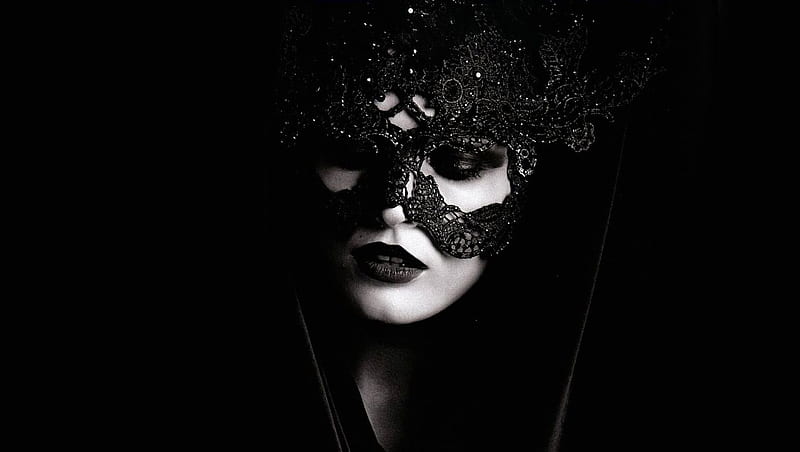
Why is it so important to learn how to take portrait photography ?
Well, a first answer is because everyone does them, and few are really beautiful ones.
Therefore, learning how to improve the photographic portraits we take means being able to give your photographs that extra something that will make them stand out. In this article, I will give you some tips to improve your portraits.
People have always been a prime subject in photography. This is both for the interest of professional photographers and simple amateurs who own a camera (it doesn't matter whether it's a compact, a reflex or an instant camera).
Who has never taken a family portrait, photographed a child playing, a birthday party or an anniversary?
There is no doubt that people are attracted to and intrigued by other people; and this increases the desire and the pleasure of photographing them. After all, it is precisely on this attraction and curiosity that the success of Instagram and social networks in general is based.
But, taking a photo, for example, just to recall a specific moment or fix a memory, is one thing; on the other hand, being able to take a beautiful photographic portrait that is able to communicate the essence of the portrayed subject is different.
The portrait, in fact, is not the simple reproduction of an image of the photographed subject, but something more. It is a way to represent the subject by making sure that the photograph taken communicates some of its particularities.
Usually a portrait sends back an attractive, pleasant and interesting image. This way it captures the attention of the viewer. For the portrait to convey this message and these sensations, the subject must be natural and relaxed .
Easy, right? No it is not.
This is exactly where the skill of the portrait photographer comes into play, who in addition to knowing the technique, must also be a bit of a psychologist, managing to understand the person who is photographing, putting them at ease.
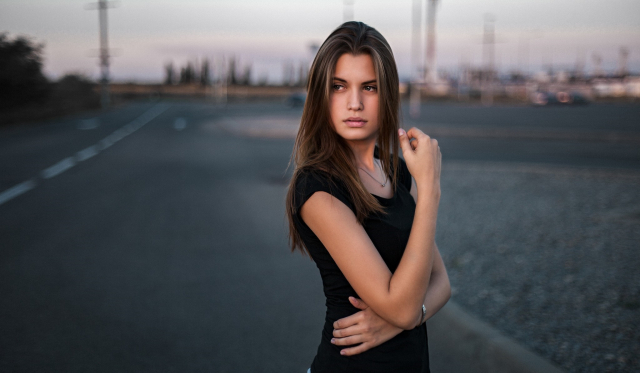
Portrait typology
We can consider the photographic portrait as a large whole that contains subsets according to the various types.
Indeed, we can distinguish:
- portrait in the pose room
- indoor portrait
- outdoor portrait
- set portrait
- the creative portrait
Most of the directions I'll give you are applicable to all types of portraits.
The first aspect, perhaps the most important when it comes to photographic portraits, is the psychological aspect of the subject to be portrayed.
How important is the psychological aspect in the portrait
If you've tried to take your own self-portrait, you know well, because you've experienced it firsthand, what it means to be in front of your camera lens. Surely, at first, you felt embarrassed and awkward, you didn't know how to put yourself and what pose to take. I err?
For this reason you can clearly understand the mood of the subject in front of you and that you have to photograph. Understand his embarrassment, and, above all, that he doesn't have the faintest idea of what to do and how to pose. Surely he would rather walk on hot coals than have his portrait drawn.
When shooting a portrait, the tension of the subject is often palpable and can be seen on their face, making it nearly impossible for the photographer to capture the best expressions.
And by better expressions I mean above all the natural and relaxed ones.
In this regard, here are some tips that can be useful from the first approach:
- schedule a pre-shoot meeting
- think first of preparing the set (and therefore the lights if it is a portrait in the pose room); or choose the location
- make him sit
- give him something to hold
- talk to your subject and …joke with him, laugh.
1. Schedule a meeting
If you have the opportunity, meet the person you will be portraying first.
This meeting will be useful for at least two good reasons:
- it will help you get to know each other better before the shooting; what better way than having a chat together to establish a relationship of knowledge, and let's also say confidence? It will certainly be useful to have a slightly calmer person in front of your camera lens.
- you will be able to understand what the subject expects from the photographs you take of them, what they want to communicate and reveal to the viewer.
2. Plan the shooting
It's really very important that you convey confidence; you have to show the subject that you will portray that you are sure of what you are doing, that you have complete command of the situation and that, precisely for this reason, you are able to guide him and give him all the information he needs.
This means that you will have to prepare in advance , to know what you want to do and what you want to achieve. You will have to prepare the lights and the set if you will be working in the pose room; you'll need to inspect the location if you're shooting outdoors or in a different interior.
Above all you will need to have already studied a series of poses in which to place your subject.
3. Have your subject sit down
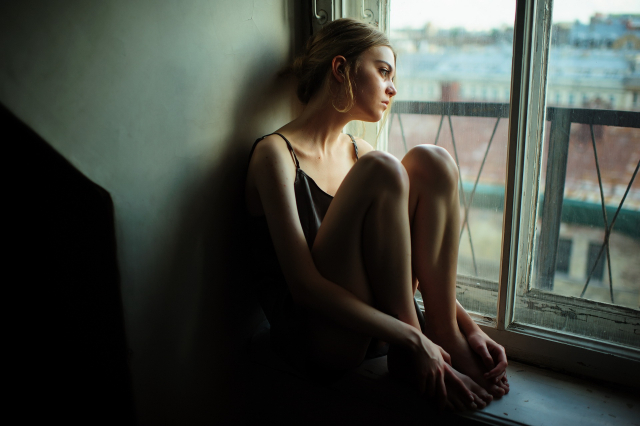
Put the person you are portraying at ease by starting to sit them, rather than making them stand like a stockfish who doesn't know how to stand and which pose to take. This way he will relax a little more and it will be easier to break the ice with the shooting session.
4. Give him something to do
It is important, above all, in the beginning to be able to distract your subject from the fixed thought that they are about to be photographed. Giving him something to hold, something to play with that distracts him, (for example a hat, a scarf, a flower, a watch ... in short, anything that attracts his attention and distracts him), will help him relax and be more natural.
5. Talk and laugh
Try to empathize with your subject; talk to him, make him talk, build confidence, joke with him, make him laugh !!
In this way he will relax, and the positive effects on his expressions will not be long in coming.
Since the success of a portrait depends to a large extent on how relaxed the subject is, as well as their willingness to cooperate, these aspects must not be underestimated.
Photographic portraits: which lenses to use
In principle I can give you this advice: use a telephoto lens .
In fact, the telephoto lens maintains natural proportions , and is therefore ideal when you want to photograph a close-up of a face.
The wide angle is more insidious, because it distorts the proportions, and you risk ending up with somewhat grotesque images.
This is because the wide angle, when used at close range, accentuates the size of the subject's nose and front of the face.
For this reason, the lenses considered best for portrait photography are 85mm to 200mm.
Obviously, if you really can't help but use a wide angle lens, my advice is to frame a larger portion of the environment in which your subject is positioned.
The light
As you surely already know and we have written several times, lighting plays a fundamental role in portrait photography.
If you learn to know and use light , you will be able to give your photographs that trait that will distinguish your style.
In the photographic portrait, light becomes essential to communicate a message, a particular sensation to the reader of the photograph.
For this reason you must learn to use light well and to your advantage, because it is just as important as your camera.
In the photographic portrait the lights affect the final result . For example, you can take a photograph of a well-exposed subject without much shading and without thinking too much about it. Surely the result will be good and the photograph will be technically correct. Perhaps, however, it will also be a little too "normal". Not bad and not wrong either. Just normal, characterless.
Light is important because it can help you change some traits of the person you intend to portray. The light, in fact, can accentuate or attenuate some features of both the face and the character of your subject.
Learn to choose and use light consciously . This will allow you to take that extra step to improve your photography skills.
Now let's see together what types of lighting we can use for the photographic portrait.
We distinguish two types of light:
- natural
- artificial
Natural light
Photographing with natural light manages to give photography spontaneity and simplicity.
However, if you photograph outdoors, in the open air, remember these simple rules :
- if you can, don't shoot in full sun . Strong sunlight is very harsh and tends to create very strong shadows , which become very unaesthetic when photographing people. Avoid the sun hitting the face of the person you are photographing directly.
- if you can, take pictures when the sky is covered by clouds: this is because the clouds become a "diffuser" of natural light . The diffused light is softer and manages to illuminate uniformly without creating shadows.
- if you can avoid photographing with the light of the central hours, because it flattens the colors and creates too marked shadows
- take advantage of the golden hour , or the golden hour that occurs shortly after sunrise, before the sun rises in the sky, and shortly before the sun sets. The light in these hours is soft and diffused, and creates a fantastic illumination in the portraits
- always put the sun behind the person you want to portray. In this way the subject will avoid squinting because blinded by the light; also there will be no harsh shadows on the face. Let me add one more thing: the sunlight positioned behind your subject will create a glow of light that will outline the hair… very pleasing to the eye. Putting the sun behind you is a very used solution, I would say classic. If you want to better illuminate your subject's face you can use a fill flash, or a reflector.
If you're shooting indoors, and if conditions permit, you can still take advantage of natural light.
Do you have a large window at your disposal? Use it!
Light entering through the window is best for portraits. And if the window from which the light enters is large, then even better because the light is more diffused.
Here's how you have to arrange the subject :
- with one shoulder to the window,
- slightly set back from the full light so as not to be hit directly; the light must be soft and arrive laterally on the subject
- far enough away from the window itself, so that the light is not too bright
You, on the other hand, will have to position yourself near the window.
In this way you will obtain a soft and delicate light, with little contrast.
Artificial light
If natural light isn't enough, you may be forced to add artificial light.
By artificial light I mean that of the reflex flash, or that of external lamps with continuous or non-continuous light.
I strongly advise against using your camera's pop-up flash . It is central, it is too direct, and the light it emits is punctiform, therefore too harsh for a portrait.
Remember this rule :
the more punctiform a light is, the more it highlights expression lines and skin defects. The more widespread it is, the more it mitigates the defects
An external flash (shoe flash) can certainly give you more control as you can decide the power of the flash. You can also use the bounce technique , that is to exploit the reflected light , and therefore more diffused and softer , which is obtained by pointing the flash on the ceiling or on a wall.
The flash light that bounces off the ceiling or a wall is certainly the most used, especially by those who are starting out. It is not difficult to use and will be able to give you excellent results.
If you decide to set up a photographic set and use lamps for artificial lighting , you must learn the basic rules and the best-known lighting techniques.
Indeed, depending on the type of lighting scheme you decide to use, you will obtain a different psychological effect .
I'll give you some examples :
- if you want your photographic portrait to convey tranquility , you must use full lighting , i.e. a light that completely illuminates the part of the subject facing the camera.
- If, on the other hand, you want to give more character to your subject, you can use side lighting , which illuminates only one part of the subject and leaves the other in shadow.
- If, on the other hand, you want a type of lighting that conveys a strong emotional, dramatic charge, you can use Rembrandt lighting . The Rembrandt light (yes, it takes its name from the Dutch painter who used it in his self-portraits), illuminates the subject from the side not facing the camera, from the side and from above, as if it came from a skylight.
- if you use diffused light , i.e. a full light, but softened by an umbrella or a bank, you get a calm and reassuring light, which softens the features of the face and the flaws
Poses
As I mentioned earlier, it is important to first know the subject you intend to portray and understand what aspects to communicate through his portrait
This is the starting point for deciding how to proceed with the shot and which poses to make your subject assume.
You have to plan the poses in advance , demonstrate that you have a clear idea of what you want to do and the results you want to achieve, without thinking too much about it in the moment. Of course, the poses also depend a lot on the type of portrait you want to photograph.
If you want to take a portrait set , perhaps of a person in his work environment, it goes without saying that it will be easier to find the most congenial pose , as you just need to get him to do his job.
Therefore, if he is a writer, you will photograph him sitting at his desk, intent on writing on the computer; if he's a chef, you'll photograph him cooking or preparing a dish, if he's a barman, you'll photograph him preparing a drink or shaking, and so on...
In general, whatever portrait you want to shoot, always try to capture your subject in a pose that feels natural to them.
Background
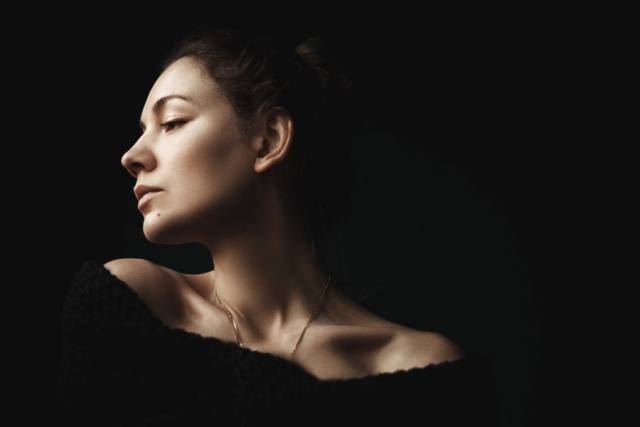
If you want to give your portraits a professional look, you need to make the background look as good as possible. A background that is too full of objects distracts attention and weighs down the image.
You know when they say less is more? So try to remove unnecessary elements from the background as much as possible. They distract attention from the subject. The simpler and cleaner the background, the better.
Naturally, this rule does not apply to set portraits. In this case the background and the environment are functional to portrait photography , because they contextualize it and go to " tell something " about the person portrayed.
If you're shooting outdoors , try to blur the background . In this way the subject you portray remains isolated and stands out more.
In short, as mentioned, including extraneous details in your photos dilutes attention . These details distract the viewer's attention from the main subject. It's best, therefore, not to include anything that doesn't help tell the story better. If it's irrelevant, remove it.
But how can we enhance the subject in our photo? There are 3 methods that allow us to do this.
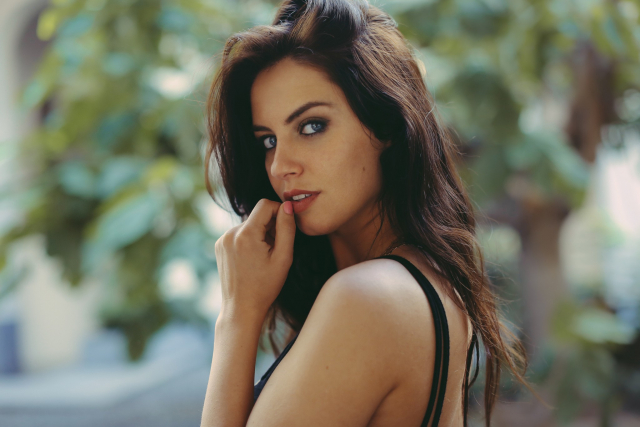
The balance of light
Finding a dark background is always nice. When the subject has more light on it than the background, it is often possible to carefully expose it so that the background is very dark or even black. This is a technique that works very well for black and white photos and portraits.
Train your eye to look for the right situations where this technique can be used. Once you know what to look for, you will instinctively do so.
Look for large areas of shade where no light comes on and no direct sunlight hits the area. Setting the camera to correctly expose the face means the rest of it is underexposed.
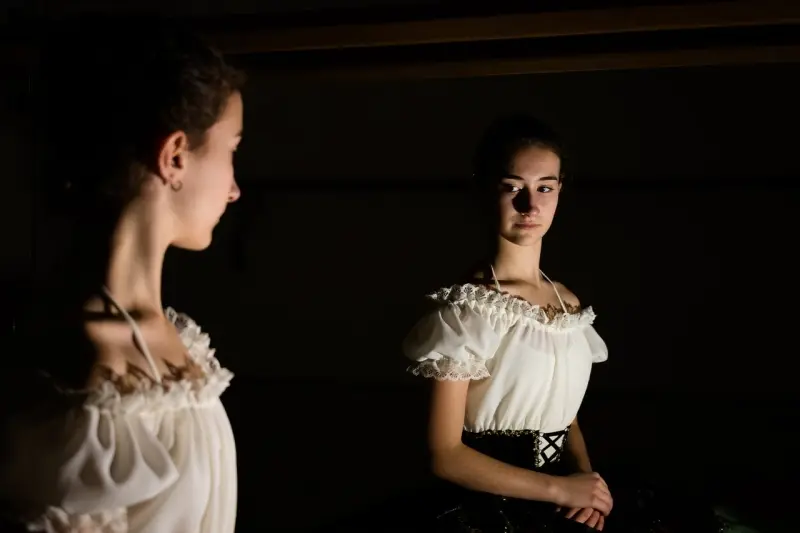
Use a spot meter setting to only read the light from your main subject and not the darker background. If the camera's light meter is set to take a reading over the entire frame and average, you will not get a satisfactory result.
The key to this method is the balance of light and dark.
If you take the exposure reading from the whole scene, the camera includes all of the dark area and wants that well exposed too. The resulting image will have an overexposed subject and visible detail in the shadows. You can also use this same method with a background that is brighter than your subject.
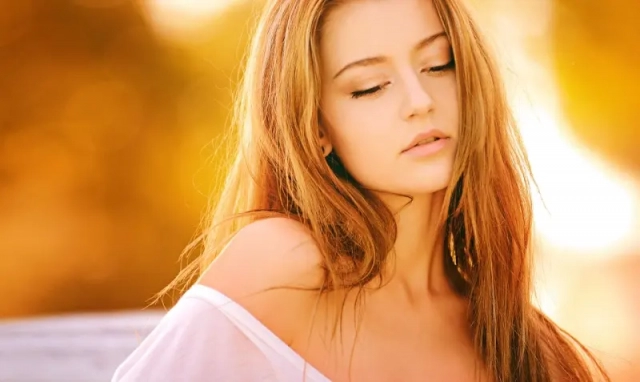
Doing this is more complicated if the light is too bright or comes directly into the lens, but, as mentioned, the same principle applies when you have more light in the background than on your main subject. Again, read your exposition only from the subject, excluding the light from the background . This way, the subject will be well exposed and the background will be overexposed.
Controlling focus and depth of field
One of the most popular methods used to isolate the subject is carefully controlled focus and shallow depth of field.
Using a wide aperture setting is crucial in this method. However, there is more that can be done than just choosing the lowest f-stop number possible.
Relative distances have a significant impact on the amount of background blur. The closer you get to the subject, with any lens, the more the blur will be blurred into the background . Likewise, the farther the subject is from the background, the softer the background will appear.
The choice of lens also affects depth of field. Using a telephoto lens, you can blur a background at any aperture setting more than you can with a wide-angle lens.
Learn to control what you focus on and other settings that affect depth of field. Getting it right means being able to include enough detail without taking attention away from the main subject.
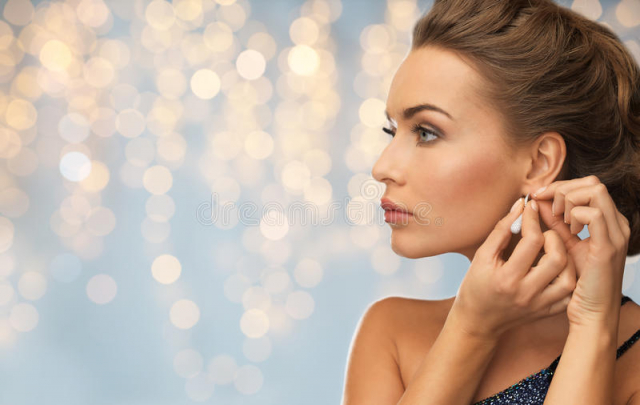
Compositional choices to isolate the subject
Your point of view (the angle you choose to take your photo) affects what you include and exclude from the frame. Often just a small change in camera position can have a significant impact on what is in the frame and what is left out.
Move around the subject and see what happens with the background. Having a tree that appears to grow out of someone's head is distracting. Changing your viewing angle a little to your left or right eliminates this distraction. Selecting a higher or lower position helps if there is a strong horizontal line in the background behind the subject.
Use guiding elements to direct the gaze towards your subject. You don't need to come up with complicated frames. Even simple LED lights can be sufficient to achieve the goal.
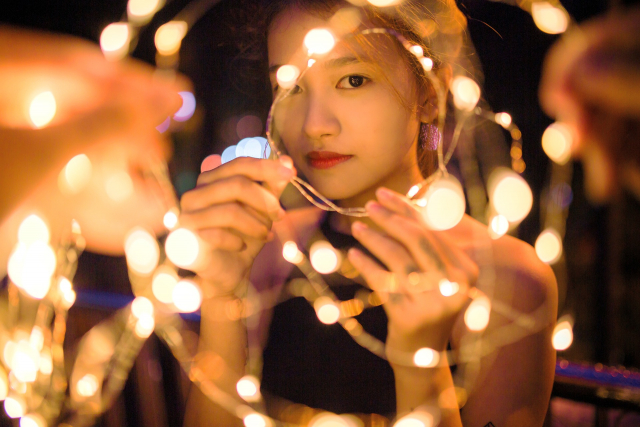
Take your time. Pay attention to the background, not just your subject, when you're making your composition. After taking your initial photo, examine it on your monitor.
Study what's in the background. Often this reveals distractions. Move a little. One side or the other, up and down. Focus on the relationship between the subject and the background elements.
The advice I have given you in this article is a good starting point for understanding how to take a photographic portrait.
They are practical advice. To these tips I want to add another: take a good look at the photographic portraits of other photographers; in this way you will be able to understand what appeals to you the most, as it might do to anyone who looks at a portrait. You'll get inspired and get a better idea of what you want to achieve with your portrait photography.
When you subscribe to the blog, we will send you an e-mail when there are new updates on the site so you wouldn't miss them.
By accepting you will be accessing a service provided by a third-party external to https://www.insightadv.it/


































































Comments